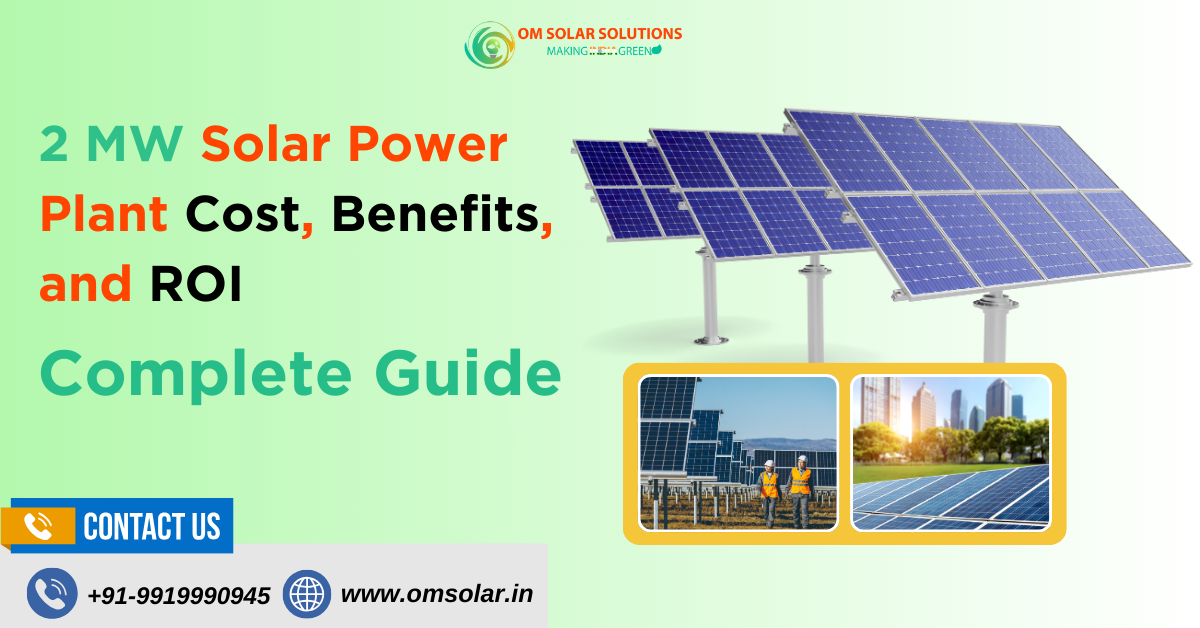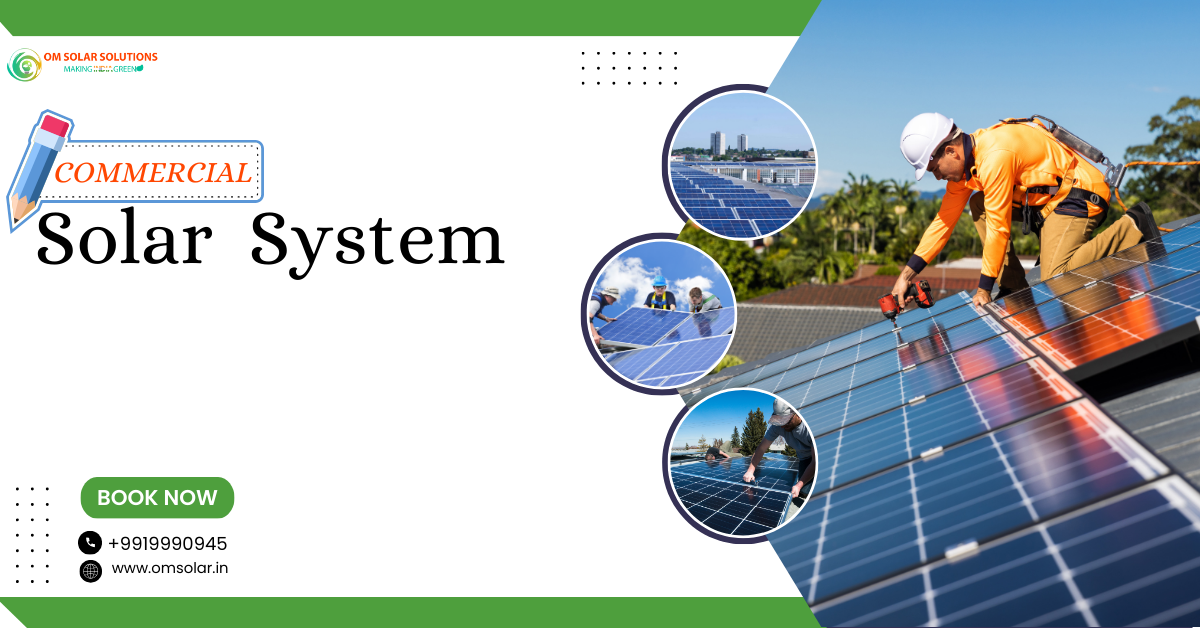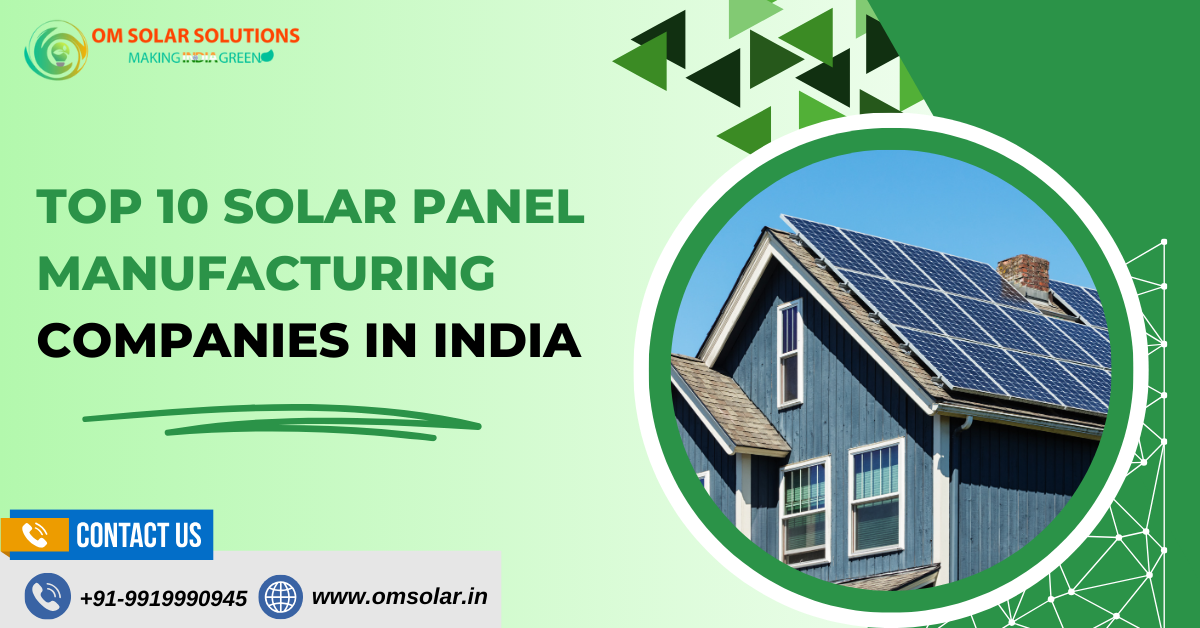Moving to green energy is no longer just a nice to have, but an imperative. Businesses and companies in India are looking to large-scale solar power plants to reduce costs and have less of an impact on the environment due to their growing energy needs. 2 MW Solar Power Plant is a great option for… Continue reading Complete Guide to 2 MW Solar Power Plant Cost, Benefits, and ROI in India
Tag: solar
Choosing The Right Solar Panel: Monocrystalline Vs. Polycrystalline Comparison
When choosing solar panels for your photovoltaic (PV) system, you’ll encounter monocrystalline and polycrystalline panels. Both types are powered by the sun, but there are key variances. Om Solar Solutions knows how crucial it is to choose the right solar energy company when rooftop solar panels installation. Since installing solar panels is becoming more popular,… Continue reading Choosing The Right Solar Panel: Monocrystalline Vs. Polycrystalline Comparison
Top 10 Solar PV Module Manufacturers in India 2024: Leading Brands, Prices, and Installation
As a result of India’s growing focus on renewable energy, many solar photovoltaic (PV) module manufacturers have become major players in the market. Solar PV modules are the heart of any solar power system; they turn sunlight into electricity. With India’s growing focus on renewable energy, choosing the right solar PV module manufacturer is essential… Continue reading Top 10 Solar PV Module Manufacturers in India 2024: Leading Brands, Prices, and Installation
Solar Subsidy in Uttar Pradesh 2024: उतà¥à¤¤à¤° पà¥à¤°à¤¦à¥‡à¤¶ में सोलर पैनल लगवाने पर कितनी मिलती है सबà¥à¤¸à¤¿à¤¡à¥€, जाने इस लेख में
Solar Subsidy in Uttar Pradesh: सोलर à¤à¤¨à¤°à¥à¤œà¥€ सबसे बहतरीन ऊरà¥à¤œà¤¾ का सà¥à¤°à¥‹à¤¤ है जो सूरà¥à¤¯ की रोशनी से मिलता है। सौर उरà¥à¤œà¤¾ से हम हमारे घरों और कारà¥à¤¯à¤¾à¤²à¤¯à¥‹à¤‚ को रोशन कर सकते है व à¤à¥€ बिलà¥à¤•à¥à¤² फà¥à¤°à¥€ में।सोलर à¤à¤¨à¤°à¥à¤œà¥€ से बिजली उतà¥à¤ªà¤¨à¥à¤¨ करने के लिठफोटोवोलà¥à¤Ÿà¤¿à¤• तकनीक का उपयोग किया जाता है। सौर ऊरà¥à¤œà¤¾ पà¥à¤°à¤£à¤¾à¤²à¤¿à¤¯à¥‹à¤‚… Continue reading Solar Subsidy in Uttar Pradesh 2024: उतà¥à¤¤à¤° पà¥à¤°à¤¦à¥‡à¤¶ में सोलर पैनल लगवाने पर कितनी मिलती है सबà¥à¤¸à¤¿à¤¡à¥€, जाने इस लेख में
Commercial Solar System Cost in Uttar Pradesh: A Comprehensive Guide by Om Solar Solution
Solar power system is the goal of establishing a commercial enterprise and industrial enterprise. In general, it is an extensive system that you need for a solar residential system and you need solar power panels to produce enough electricity to meet the needs of the energized building. Also Read: The Cost of Installing a Solar… Continue reading Commercial Solar System Cost in Uttar Pradesh: A Comprehensive Guide by Om Solar Solution
Top 10 Solar Panel Manufacturing Companies In India
A solar installation company, environmentally conscious citizens, and stringent government regulations have propelled India to the forefront of solar energy. Solar power use has grown a lot in the last ten years, which is what has caused solar panel manufacturing companies in India to grow. Not only are these companies helping India become energy independent,… Continue reading Top 10 Solar Panel Manufacturing Companies In India






